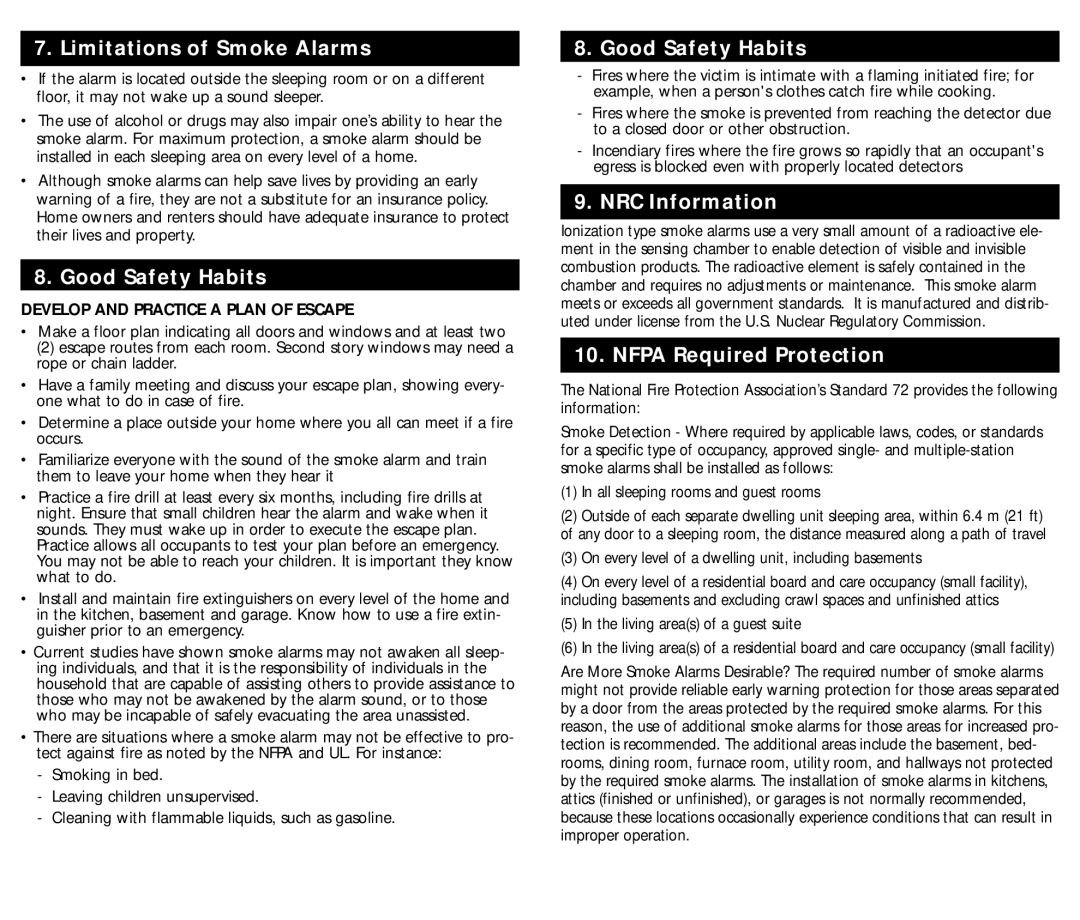L2, PI9000, I9040RV, I9050, I9060RV specifications
Kidde smoke alarms, including the I9060RV, I9040, I9050, I9040RV, and PI9000, are designed to provide robust safety solutions for residential and commercial spaces. Each model incorporates advanced technologies and features to ensure timely detection of smoke and fire hazards, enhancing the safety of occupants.The Kidde I9060RV is a hardwired smoke alarm with a battery backup, ensuring it remains operational even during power outages. Its residential safety features include an ionic sensing chamber that is highly effective in detecting fast-flaming fires, while the battery backup provides added reliability. The I9040 is another reliable choice with a battery-operated design, ideal for homes without hardwiring. Its photoelectric sensing technology offers enhanced detection of smoldering fires, minimizing false alarms caused by cooking fumes.
The I9050 model continues this trend, featuring both ionization and photoelectric sensing technologies for comprehensive smoke detection. This dual-sensor capability allows it to respond quickly to a wider range of fire types, making it a versatile option for different environments. The I9040RV, tailored specifically for RV and mobile living spaces, maintains reliability while being lightweight and easy to install. It features a battery-operated design that is suitable for the unique electrical requirements of recreational vehicles.
The PI9000 model introduces another important safety feature: a voice alarm system that provides clear alerts to occupants, distinguishing between smoke and carbon monoxide, if combined with Kidde carbon monoxide alarms. This feature increases the effectiveness of emergency responses, as occupants can quickly identify the nature of the threat.
All these alarms come equipped with battery status indicators to ensure operational readiness, and their sleek, compact designs allow for easy installation and integration into any decor. Kidde smoke alarms are also built with tamper-resistant features, preventing unauthorized removal, ensuring that these essential safety devices remain in place.
With a focus on user-friendly designs, enhanced detection technologies, and comprehensive safety features, Kidde smoke alarms stand out as reliable choices for anyone looking to protect their home or workplace from unpredictable fire hazards.

